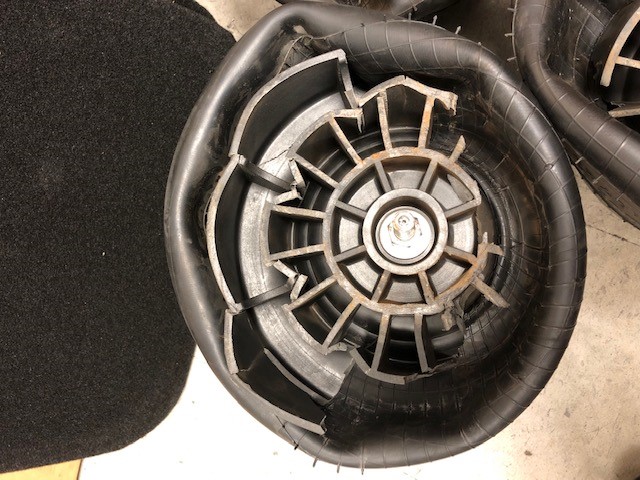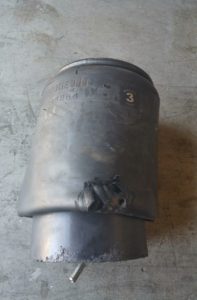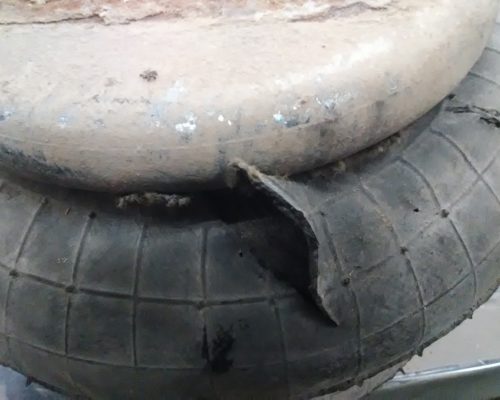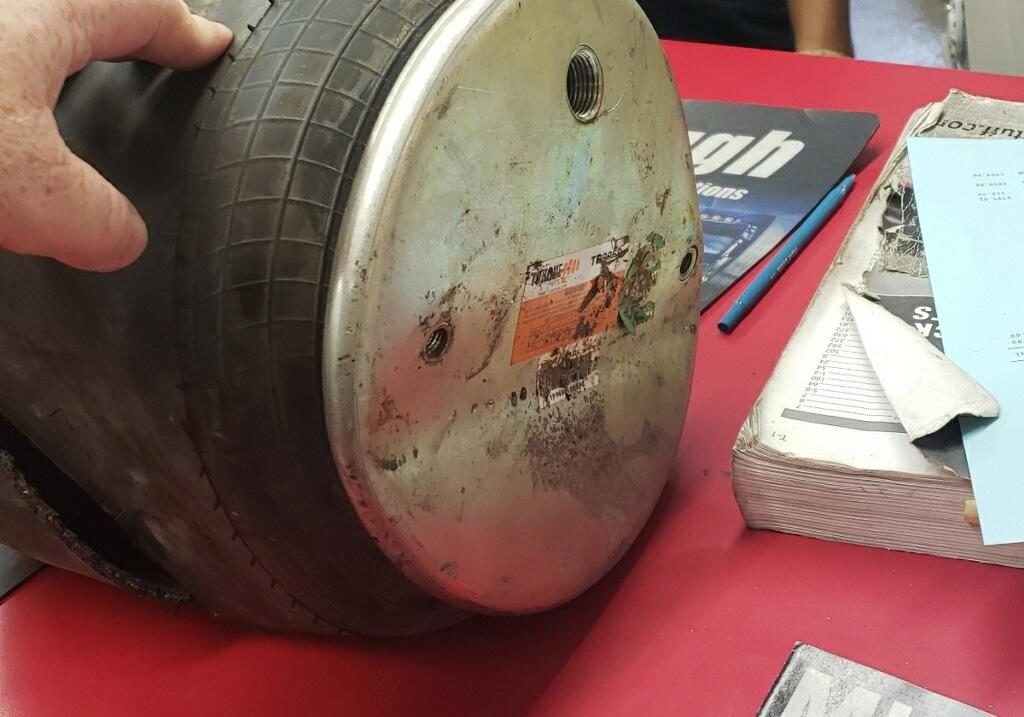WARRANTY EVALUATION GUIDELINES
Torque Air Springs are made to give their user thousands of miles of worry-free service. The longevity of our air springs lives is such that other suspension parts of the vehicle such as shocks, bushings, valves or regulators may wear off way before our air springs do. This, of course, happens because of our sturdier rubber and the higher quality materials we use on our plates and pistons. Most premature failure returns have shown that the returned product is not defective and that the premature failure will have happened because of abuse caused by the failure of the parts mentioned above. The following pages will show examples of these premature failures that are not covered under our warranty.
Our air springs use OE spec rubber and last at least 3 Million cycles before failing. Torque Air springs are the only air springs in the aftermarket that are warrantied for 3 years and unlimited miles. This warranty covers any manufacturing defect. Issues that are not of manufacturing-related such as abrasion, overextension, circumferential cuts, misalignments, debris, and chemical-related premature wear and tear are not covered under this warranty.
External Abrasion
As you can see the below air springs have been rubbed against. This could be road dirt and debris, or the bag may have rubbed against components on the vehicle. Each picture shows a different scenario as to what could happen when the air spring takes damage from the outside.
Base Popping Off
This happens due to a couple of reasons;
- Bushings have gone bad and the suspension is not sitting where it is supposed to be sitting, which causes the air spring to operate at an angle it isn’t designed to operate in.
- The control valve is working improperly and is causing the air spring to take in more air than what it should during operation.
- Air spring is installed on the wrong application and is too short
Over torqued air inlet / stud
This happens when too much pressure is applied to the air inlet or the stud attached to the air spring. Most common cause of this is the mechanic/installer ignores the manufacturer’s manual for specific recommendations.
Over extension
When an air spring is overextended this will cause the air springs top plate to convex as seen below. This is commonly seen on lift axle applications that are used in logging or construction sites, causes of this are;
- The ride height of the air spring is too high because of a bad leveling valve
- Shock absorbers are not working properly / or wrong shock absorbers are in use
- Wrong air spring use
Circumferential Cuts/Tears
Cuts or tares as seen below can happen with any air spring due to the possible reasons below;
- There is excessive pressure on the air spring (over recommended weight)
- The air spring was fully extended for long periods of time
- The air spring was impacted while it was compressed
- Wrong air spring was used on the wrong application
Installed while the base was in the bellow,
This kind of damage will be seen on air springs that have been installed on to a truck or a trailer while they are completely deflated and the piston on the air spring is in mostly in the bellow of the air spring. During installation, customers must make sure that the base on the air spring that is being installed is not completely inside the air spring. During installation, you should be able to see more than half of the base from the side.
Overload
The below happens for a few reasons;
- When being installed on to the application the base/pedestal of the air spring is completely in the bellow of the air spring, it should be aired up so that the base is not completely in the bellow.
- Having too much weight on the application while the air spring is completely deflated then putting air in the bag while the weight is still on the air spring.


Wrong air spring for the wrong application
The above pictures are indications that the air springs that have been installed on the application is either too short (concave) or too long for the application (convex). To avoid this from happening please make sure that you are using the correct dimensioned air springs. You may have air springs that might fit the same application however if the length of the air spring is significantly different you’ll see the above issues happen.









































































